Last Updated on 29 July 2025 by Greg Brookes
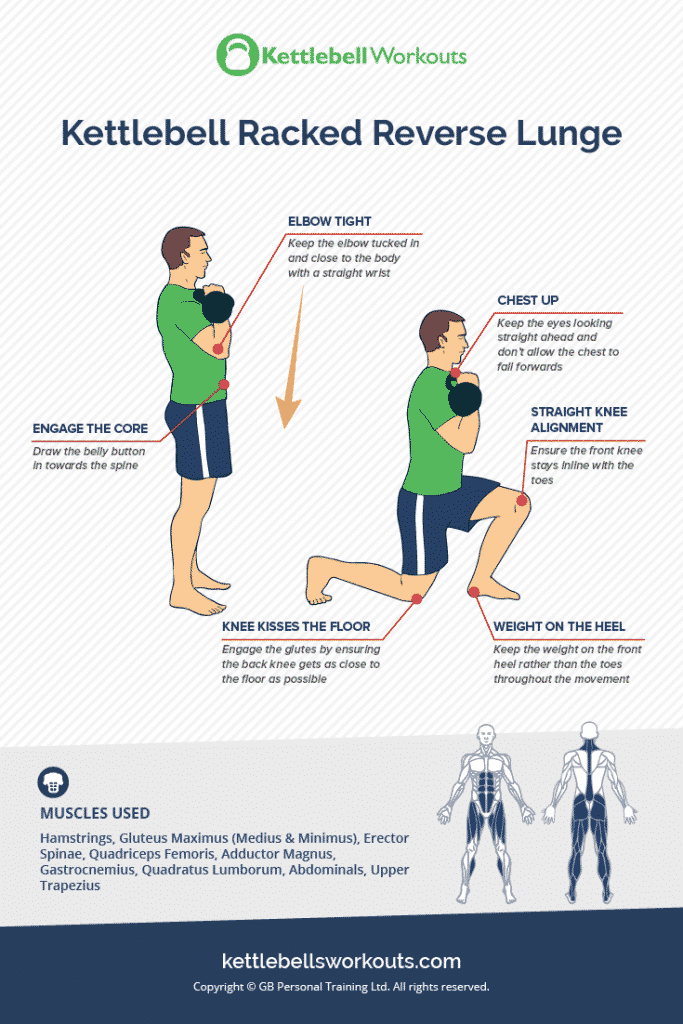
The kettlebell reverse lunge is one of the most joint-friendly lower-body strength builders you can perform.
Unlike its forward counterpart, this version places less stress on the knees while activating the glutes, hamstrings, and core stabilisers.
For kettlebell lifters looking to strengthen imbalances, improve single-leg control, and add metabolic challenge, this move delivers.
I’ve taught it to hundreds of clients, from beginners to seasoned lifters. It serves not just as a strength movement, but also a teaching tool for clean footwork, posture, and kettlebell handling under load.
What Is the Kettlebell Reverse Lunge?
The kettlebell reverse lunge involves stepping one leg backward into a lunge position while holding a kettlebell, typically in either a goblet or racked position.
It challenges balance, hip mobility, and coordination, all while placing emphasis on the glutes and posterior chain.
Unlike forward lunges, stepping back reduces forward knee travel, making this a more knee-friendly choice. This makes it a safer and more accessible option for beginners who are still building control and stability.

Why the Reverse Lunge Matters
Here’s what makes the kettlebell reverse lunge a foundational lower-body drill:
- Glute and hamstring focus
- Balance and stability
- Core and posture
- Joint health
- Progressive strength
Each benefit enhances real-world strength.
The glutes are heavily engaged when you lunge deep and pull from the front heel. This teaches the hips to drive, rather than relying on the knee joint or quad dominance.
Leaning slightly forward over the front leg increases glute activation. In contrast, remaining more upright or leaning backward shifts the effort more toward the quads.
Mastering both torso positions provides a useful tool for targeting different parts of the lower body.
Additionally, adjusting your stance can further enhance the stimulus:
- Raising the front foot (e.g., placing it on a weight plate or platform) allows for greater depth, which increases glute recruitment. Just be sure to keep the foot stable and drive through the heel.
- Elevating the rear foot (as in a Bulgarian split squat) shifts load demand onto the front leg. This version emphasises quad strength and balance, and should be progressed to gradually.
Muscles Worked
- Gluteus maximus and medius
- Hamstrings
- Quadriceps (especially vastus medialis)
- Core (obliques, transverse abdominis)
- Calves and ankle stabilisers
- Upper back (if racked or goblet held)
This makes the reverse lunge a full-body challenge, particularly when adding kettlebell load.
The muscle activation is both stabilising and strengthening.
Coach’s Insight: Greg’s Take
Most people rush their lunges. They’re either bouncing forward or collapsing downward.
The reverse lunge slows things down. It teaches control, not just strength.
I often use it as a diagnostic tool too. Weak glutes? Poor bracing? Lack of ankle mobility? This movement reveals it all.
And here’s something I hear often: “Squats and lunges hurt my knees.”
In many cases, the issue isn’t the knees themselves. It’s a lack of stability at the hips or control at the knee. Once you address glute activation and build up control through bodyweight and then kettlebell reverse lunges, that discomfort often disappears.
Discomfort isn’t always damage, it’s often just weakness or poor coordination. The reverse lunge is one of the best tools I use to help people build that foundational control.
I prefer the racked position once clients master the basics. It lights up the core and teaches you how to stay tight under asymmetrical load.
How to Perform the Kettlebell Reverse Lunge (Step-by-Step)
- Start standing tall, holding a kettlebell in the goblet or racked position.
- Brace your core and step one leg back, lowering into a lunge.
- Keep the front heel grounded and the front shin vertical.
- Descend until the back knee hovers just above the floor.
- Drive through the front heel to return to standing.
- Repeat for reps, then switch sides.
Focus on staying balanced and slow through the entire range. Glute activation peaks at the bottom, especially if you control the descent.
Watch the Kettlebell Reverse Lunge in Action:
Common Mistakes to Avoid
- Leaning too far forward or collapsing the torso
- Letting the front heel lift or knee drift inward
- Rushing the descent or bouncing off the back leg
- Allowing the kettlebell to pull you off-centre
- Not bracing before stepping back
Correcting these mistakes ensures better control and reduces injury risk. Maintaining core engagement and vertical alignment is essential for clean reps.
Load and Grip Variations
- Goblet hold
- Racked hold
- Double racked
- Suitcase hold
- Overhead reverse lunge
Each grip changes the demand. Goblet is easiest and teaches positioning.
The racked version adds core and shoulder stability. The double racked is brutally effective for full-body tension.
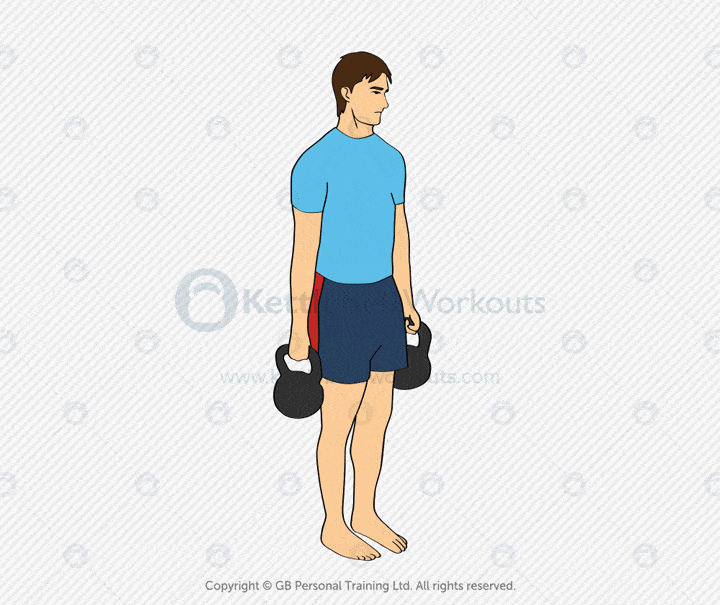
Programming Tips and Reps
- Strength: 4–6 reps per leg, heavier kettlebell, 3–5 sets
- Conditioning: 10–15 reps per leg, lighter bell, short rest
- Pair with: swings, rows, presses, or other unilateral moves
Use as a warm-up primer or main lift depending on goals. Program based on your current skill level. Beginners can cycle reverse lunges in multiple times a week.
When to Use This Exercise
- As a knee-friendly lower-body builder
- In fat-loss circuits for full-body demand
- To correct left-right imbalances
- As an accessory to heavy squats or deadlifts
- In minimal-equipment programs
The reverse lunge is effective, scalable, and safe.
Comparison to Similar Movements
- Forward Lunge
- Walking Lunge
- Overhead Lunge
- Side Lunge
Each variation changes load, joint stress, and emphasis. Forward lunges are more quad-heavy and need good control.
Walking lunges are more dynamic and condition coordination. Side lunges challenge lateral stability.
Related Exercises You Can Try Next

Want More Smart Kettlebell Training?
Explore my full kettlebell training system to master every pattern: from swings and squats to flows and complexes.
Whether you’re chasing strength, mobility, or sustainable fat loss, there’s a plan for you.
Add balance and leg strength with more lunges and lifts in the kettlebell exercises guide.
Frequently Asked Questions
Start with bodyweight then a kettlebell you can control for 8–10 reps per leg. Most men start with 12–16kg, women with 8–12kg.
Yes. It allows more control over the forward knee and so is generally more joint-friendly.
Start with goblet for form, then progress to racked to increase core and upper body demand.
If using bodyweight to very light load, yes, especially for mobility and patterning. Heavier strength work should be limited to 2–3x/week.
Not necessary. Hovering an inch above maintains tension and protects the kneecap.
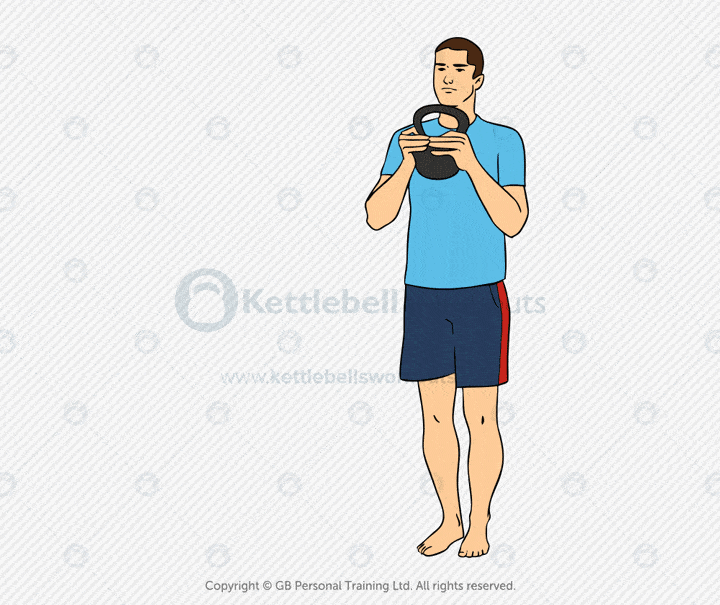

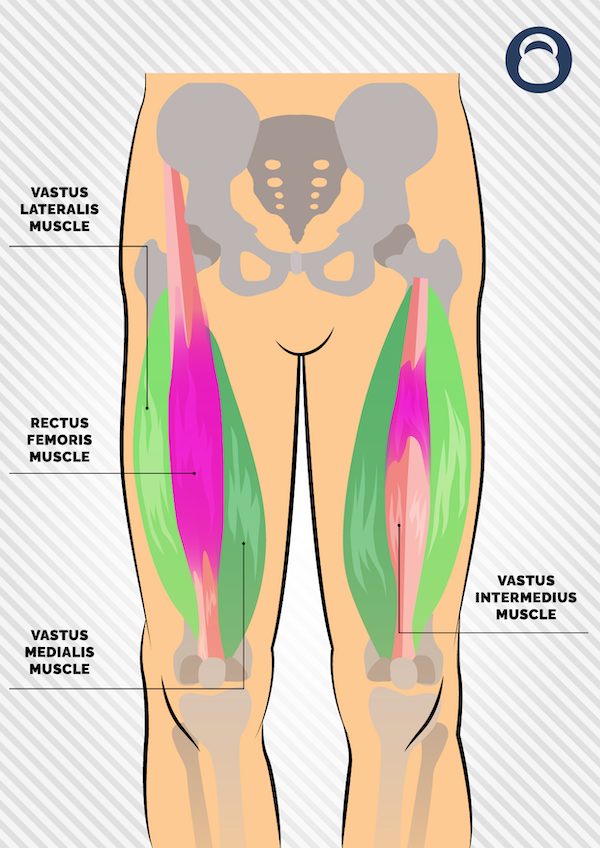

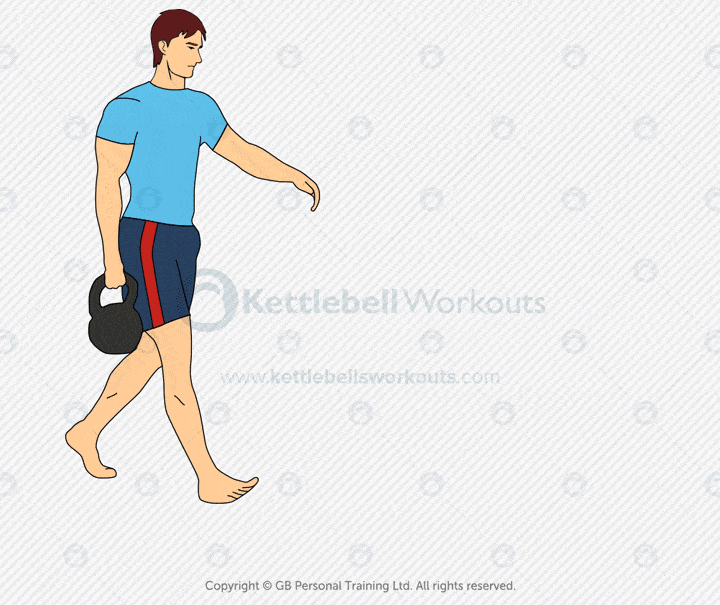
I just wanted to let you know that your videos are the best I’ve come across. I love your clear, step by step instructions. Its not often you come across a PT who not only really knows his stuff, but also has the skills to teach it. Keep it up!
Thanks Sarah, what great feedback.
These workouts are awesome…
I did my level1 kettle bell cert (isca) just over 18months and I must commend your instructions
Awesome work
Thanks Jazzie, yes I’ve been a PT and teaching kettlebells for a long time 🙂